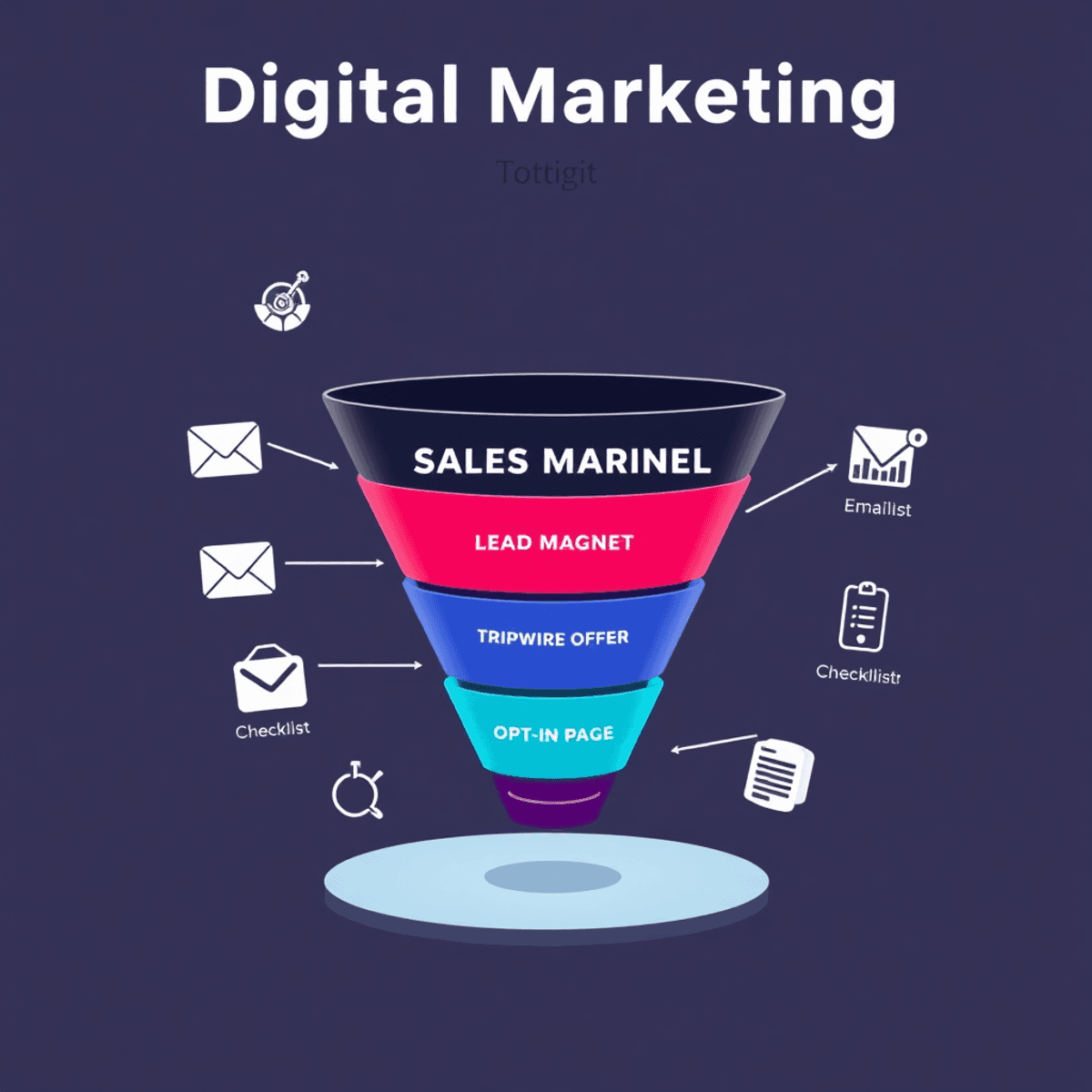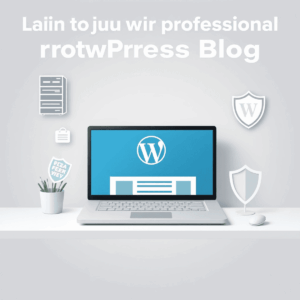A sales funnel is a strategic journey that guides potential customers from initial awareness to making a purchase. It breaks down the buying process into clear stages, allowing you to engage prospects effectively at each point.
Setting up and testing sales funnels is crucial for business success. Without a well-planned funnel, leads can slip away unnoticed, and conversion rates suffer. Testing helps identify weak spots, ensuring every step performs optimally.
Key benefits of a well-structured sales funnel include:
- Increased lead generation
- Higher conversion rates
- Streamlined customer experience
- Predictable revenue growth
Modern Warrior Sites plays a vital role in this process by providing robust hosting and optimization tools tailored for sales funnels. Their platform supports smooth funnel setup, reliable performance, and easy integration with marketing tools—helping you build funnels that work like a pro. Moreover, incorporating effective branding tips into your sales funnel strategy can significantly enhance your brand identity, recognition, and trust, ultimately leading to a more successful business.
Understanding the Components of a Successful Sales Funnel
A sales funnel consists of several key elements that work together to guide prospects from initial interest to paying customers. Three fundamental components are the lead magnet, tripwire offer, and opt-in page.
1. Lead Magnet
This is a valuable resource you offer for free in exchange for contact information, typically an email address. Examples include ebooks, checklists, or exclusive guides like “99 Tips for Building a Functional and Profitable Website.” The lead magnet’s purpose is to attract attention and build trust by providing immediate value.
2. Opt-In Page
The landing page where visitors submit their details to receive the lead magnet. A well-designed opt-in page clearly communicates the benefits of the offer and includes persuasive calls-to-action (CTAs) that encourage sign-ups.
3. Tripwire Offer
A low-cost product or service presented immediately after the lead magnet delivery. This offer is irresistible and easy to say yes to, which helps convert leads into paying customers quickly. Examples include mini-courses, discounted software trials, or exclusive webinars.
These components create a seamless flow—your opt-in page captures leads using a compelling lead magnet, then the tripwire offer builds on that trust by encouraging an initial purchase. Successful businesses use this strategy to nurture relationships while increasing conversion rates effectively. For instance, an online marketing coach might offer a free checklist as a lead magnet, followed by an affordable workshop as their tripwire offer.
Step-by-Step Guide to Setting Up Your Sales Funnel
Setting up your sales funnel starts with opt-in page design — the frontline where you capture potential leads.
Designing Your Opt-In Page
Your opt-in page must grab attention instantly. Use a clear, benefit-driven headline that explains exactly what visitors gain by subscribing. Keep the form simple: typically just a name and email address to reduce friction. Include a strong call-to-action (CTA) button using action words like “Get Your Free Guide” or “Claim Your Spot Now.” Visuals should support your message without overwhelming the page. Trust signals such as privacy assurances or testimonials boost credibility here.
Creating Your Thank-You Page
Next, focus on thank-you page creation after someone opts in. This page is not just a courtesy; it’s a critical touchpoint for relationship building.
A well-crafted thank-you page reassures subscribers their information is secure and delivers immediate value—like access to your free guide or bonus content. Use this space to set expectations about future emails and introduce low-pressure offers or next steps. Adding social proof, such as user reviews or success stories, can deepen trust and increase engagement.
Setting Up Email Automation
The final step involves email automation setup to maintain contact and nurture leads automatically.
Craft an email sequence that gradually builds rapport and moves subscribers down the funnel toward purchase decisions. Your initial emails should focus on delivering value, answering common questions, and positioning your product or service as a solution. Use storytelling techniques and personalized content to keep readers interested. Automation platforms like Mailchimp or ConvertKit simplify this process by scheduling emails based on subscriber behavior, making follow-ups effortless yet effective.
Key Actions for Each Step
To ensure you implement these strategies effectively, here are key actions for each step:
- Designing Your Opt-In PageCreate a clear headline that communicates the benefit of subscribing.
- Keep the form fields minimal (name and email address) to reduce friction.
- Use strong action-oriented words in your CTA button.
- Choose visuals that complement your message without overpowering it.
- Include trust indicators such as privacy assurances or testimonials.
- Creating Your Thank-You PageConfirm subscription success with a friendly message.
- Deliver immediate value by providing access to your free guide or bonus content.
- Introduce next steps or offers in a non-pushy manner.
- Incorporate social proof through user reviews or success stories.
- Setting Up Email AutomationCraft email sequences that provide valuable content relevant to your audience’s interests.
- Personalize messaging by addressing subscribers by name and tailoring offers based on their preferences.
- Utilize behavioral triggers within your automation platform to send targeted emails based on subscriber actions (e.g., opening an email, clicking a link).
- Include clear calls-to-action in each email guiding recipients toward making a purchase decision.
By mastering these steps, you’ll be able to efficiently capture leads through your funnel, thoughtfully nurture relationships with personalized communication, and professionally drive conversions through strategic offers and calls-to-action.
Choosing Irresistible Lead Magnets and Offers That Convert
When it comes to attracting potential customers and driving conversions, selecting the right lead magnets and offers is crucial. In this section, we’ll explore the key factors to consider when choosing lead magnets that resonate with your target audience and align with your business goals. We’ll also discuss strategies for selecting low-ticket offers that not only generate sales but also prepare customers for higher-priced products or services.
Factors to Consider When Selecting a Lead Magnet
- Understand Your Target Audience: Conduct thorough research to gain insights into your target audience’s preferences, pain points, and interests. This will help you create lead magnets that speak directly to their needs.
- Align with Your Business Goals: Ensure that your lead magnets are aligned with your overall business objectives. Whether it’s building an email list, promoting a specific product, or increasing brand awareness, your lead magnets should support these goals.
- Offer Value: Your lead magnets should provide genuine value to your audience. Think about what information, resources, or tools would be most beneficial to them and create lead magnets around those topics.
- Test Different Formats: Experiment with different types of lead magnets such as e-books, webinars, templates, or free trials. Monitor their performance and identify which formats resonate best with your audience.
Strategies for Choosing Low-Ticket Offers
- Bundle Products or Services: Create bundles that combine lower-priced products or services with higher-priced ones. This encourages customers to purchase the bundle while also introducing them to your premium offerings.
- Upsell Opportunities: Identify opportunities within your existing sales process where you can upsell customers from low-ticket offers to higher-priced products or services.
- Limited-Time Promotions: Run limited-time promotions on low-ticket offers to create a sense of urgency and encourage immediate purchases.
- Customer Feedback: Seek feedback from existing customers about their experience with your low-ticket offers. Use this feedback to refine your offerings and make them more appealing.
By carefully selecting lead magnets that resonate with your target audience and choosing low-ticket offers strategically, you can increase your chances of converting leads into paying customers while also setting the stage for future upsells.
Designing High-Converting Opt-In Forms and Thank-You Pages
Creating effective opt-in forms and thank-you pages is crucial for maximizing conversions and providing a positive experience for your subscribers. In this section, we’ll explore some best practices for designing visually appealing and user-friendly opt-in forms, as well as key elements to include on your thank-you pages.
Best Practices for Opt-In Form Design
When it comes to designing your opt-in forms, keep the following best practices in mind:
- Keep it simple: Avoid overwhelming visitors with too many fields or complex requirements. Stick to the essentials and make it easy for them to sign up.
- Use contrasting colors: Make your opt-in form stand out by using colors that contrast with the rest of your website. This will draw attention to the form and increase the chances of conversion.
- Include a clear call-to-action: Use action-oriented language in your button text to encourage visitors to take action. Instead of using generic phrases like “Submit” or “Sign Up,” try using more specific ones like “Get Your Free Guide” or “Join Our Community.”
- Optimize for mobile: With more people accessing websites on their mobile devices, it’s important to ensure that your opt-in forms are mobile-friendly. Test how they look and function on different screen sizes to provide a seamless experience.
Key Elements to Include on Your Thank-You Pages
Once someone has successfully signed up through your opt-in form, it’s important to make them feel appreciated and provide additional value. Here are some key elements you should consider including on your thank-you pages:
- Social proof: Display testimonials or reviews from satisfied customers to build trust and credibility.
- Additional resources: Offer links to relevant blog posts, videos, or other content that can further educate or entertain your subscribers.
- Exclusive offers: Provide special discounts or promotions exclusively for those who signed up through the opt-in form.
By implementing these best practices in your opt-in form design and incorporating these key elements into your thank-you pages, you can create a seamless onboarding experience that maximizes conversions and keeps your subscribers engaged.
Crafting Engaging Email Sequences That Drive Results
Creating an effective email sequence content is crucial for nurturing leads and converting them into paying customers. Your emails must do more than just deliver information—they need to capture attention, build rapport, and prompt action. Here are practical tips to help you write persuasive email content:
1. Start with a strong subject line
Make it clear, intriguing, and relevant to increase open rates.
2. Personalize your messages
Use the recipient’s name and tailor content based on their interests or behavior.
3. Provide value consistently
Share useful tips, insights, or exclusive offers that address your audience’s pain points.
4. Include a clear call-to-action (CTA)
Tell your readers exactly what you want them to do next, whether it’s clicking a link, replying, or making a purchase.
5. Keep it concise and conversational
Write like you’re having a one-on-one conversation to foster trust and engagement.
Automation platforms simplify managing these sequences by allowing you to schedule emails, segment your audience, and track performance. Two popular tools stand out:
- Mailchimp: Known for its user-friendly interface and robust analytics. It supports customizable automations ideal for beginners and growing businesses.
- ConvertKit: Preferred by creators and bloggers. Offers intuitive automation workflows focusing on lead tagging and personalized sequences.
Leveraging these platforms helps you streamline your sales funnel process while delivering timely, relevant messages that drive conversions efficiently.
The Crucial Role of Testing in Optimizing Your Sales Funnel Performance
Testing is the backbone of conversion optimization. Without a thorough funnel testing process, you risk overlooking critical bottlenecks that reduce your sales funnel’s efficiency. Every step in your funnel—from the opt-in page to the final purchase—needs careful examination to ensure it performs at its best.
You can identify weak points by systematically testing individual elements such as:
- Headlines: Small changes in wording or tone can dramatically affect engagement.
- Calls-to-Action (CTAs): Experiment with button colors, text, and placement to find what drives clicks.
- Page Layouts: Test different designs, images, and content arrangements to see which holds visitors’ attention longer.
A/B testing is one of the most effective strategies here. It allows you to compare two versions of a page or element and measure which one converts better. Implement tests regularly and analyze the data to make informed decisions, rather than relying on guesswork.
Incorporate analytics tools alongside your testing efforts. Tracking metrics like click-through rates, bounce rates, and conversion paths provides insights into user behavior within your funnel. This comprehensive approach sharpens your ability to optimize each funnel stage effectively.
Setting up and testing sales funnels is not a one-time task—it’s an ongoing process that keeps improving your conversion rates and ultimately boosts revenue.
Checklist for Setting Up and Testing a High-Performing Sales Funnel Like a Pro!
When setting up and testing your sales funnel, it’s crucial to follow a comprehensive checklist to ensure optimal performance. Here are key steps to consider:
- Define Your Goals: Clearly outline your objectives for the sales funnel, whether it’s lead generation, increasing conversions, or boosting sales.
- Identify Your Target Audience: Understand your audience’s needs and preferences to tailor your funnel components accordingly.
- Select the Right Tools: Choose appropriate software and platforms for building opt-in pages, email sequences, and testing capabilities.
- Create Compelling Copy: Craft persuasive content for each stage of the funnel to engage leads and drive them towards conversion.
- Optimize for Mobile: Ensure that all elements of your funnel are mobile-responsive for a seamless user experience across devices.
- Integrate Tracking Analytics: Implement tracking tools to monitor visitor behavior, conversion rates, and other key metrics.
- A/B Test Elements: Experiment with variations of headlines, CTAs, design layouts, and offers to determine what resonates best with your audience.
- Monitor Performance Continuously: Regularly analyze data and tweak your funnel based on insights gathered from testing results.
By following this checklist diligently, you can build and test a high-performing sales funnel that maximizes conversions and drives business growth effectively.
Conclusion
Remember, the journey doesn’t end after launching your sales funnel. Consistent optimization is key to maximizing results and staying ahead in the game of conversions.
It’s time to put your newfound knowledge into action. Start implementing the strategies and tips you’ve learned in this article to supercharge your sales funnel performance. Utilize Modern Warrior Sites’ hosting services to streamline and optimize your funnel effortlessly.
Your sales funnel success awaits – dive in and make it happen!




